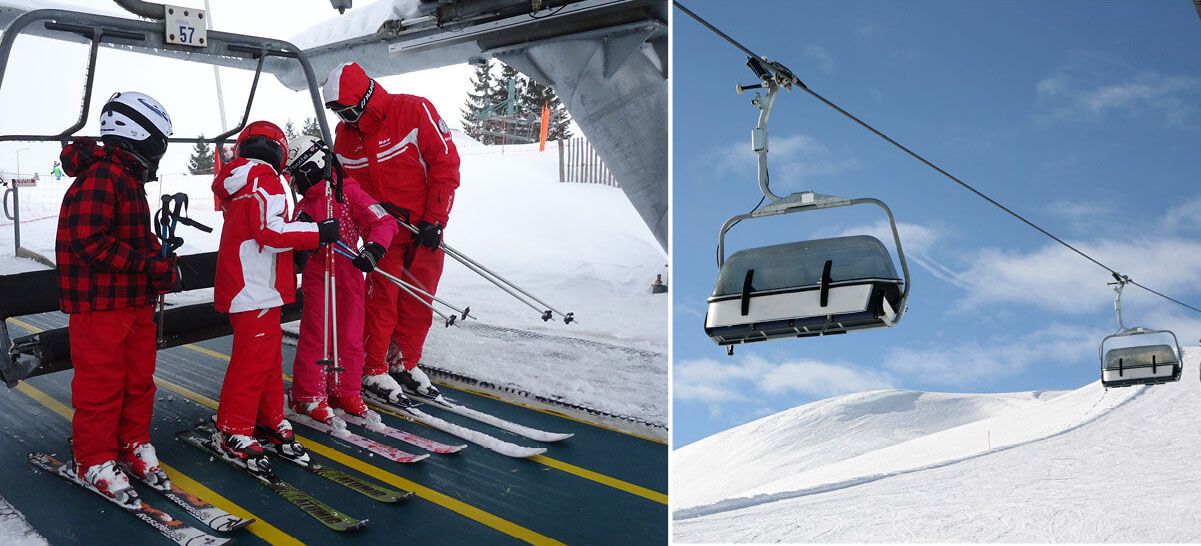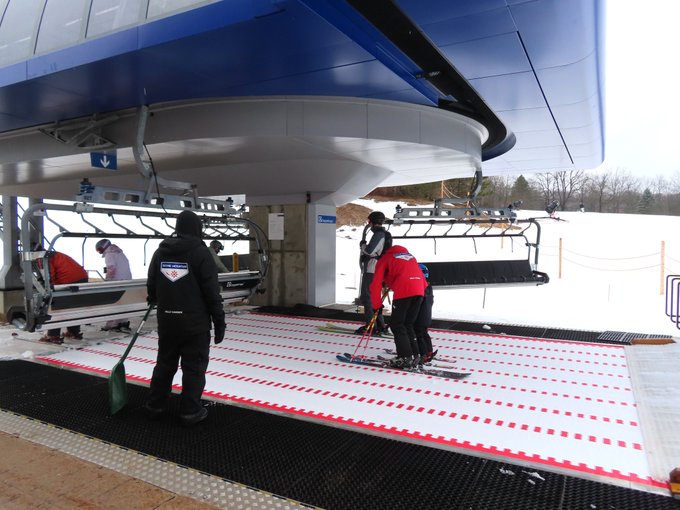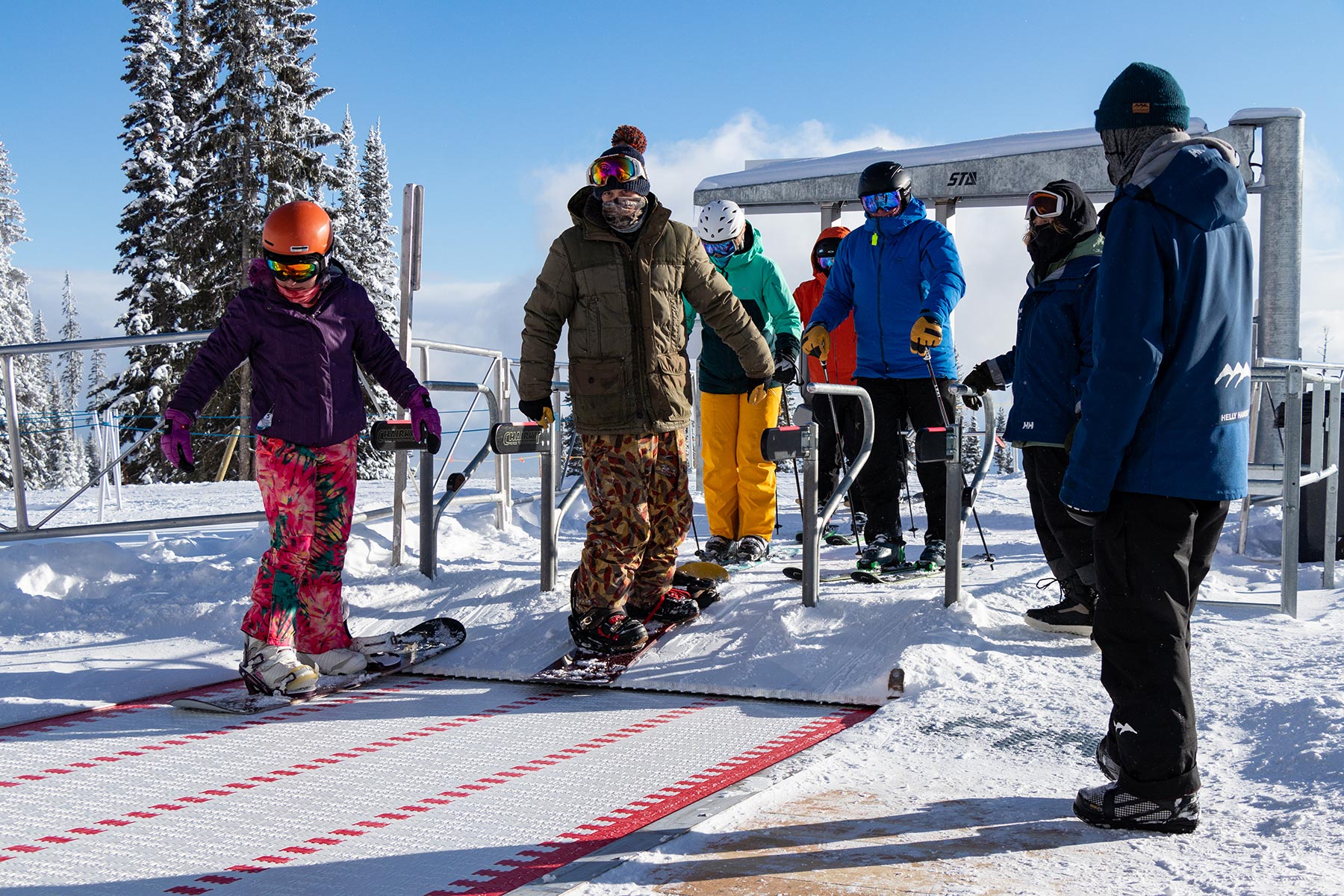
Across resorts in the United States and Canada, a staggering 14 loading conveyors are to be installed across 13 ski areas in the coming season. Record visitation numbers across American resorts in the 22/23 have promoted investments across ski resorts in North America. While it is great to see so many resorts investing in their infrastructure, many Americans could be forgiven to wonder what has caused the rise in loading conveyors being installed.
This last season was one for the record books with historic levels of snowfall, resorts having their longest seasons in history, and all-time-high skier attendance levels. The National Ski Areas Association (‘NSAA’) reported a total of 64.7 million skier visits in the United States in 2022/23 which is a 6.6% increase over the 21-22 season. Those numbers are the highest since the 1978/79 season when the NSAA started to keep track of skier visits.
It is a great sign that the American ski industry is strong and growing, which has prompted many resorts to make huge capital investments moving forward. This past year, we learned of ski resorts investing hundreds of millions of dollars into their operations over the next few years. Resorts are focusing on the guest experience, terrain, and increasing lift capacity to accommodate an increased number of guests, as shown by the record number of nationwide skier visits last year.

It is no secret that Europe has been ahead of the U.S. for decades concerning its lift capacity and ability to get skiers and riders up the mountain. U.S. resorts have taken notice and now it seems every day we see a new press release with news of lift upgrades around the country. Resorts are not only adding new lifts but also adding conveyor belt loading systems at the bottom of some of those lifts. These conveyor systems are intended to improve the speed and safety of guests as they get on the lift.
- Related Article: Top 5 Longest Chairlifts in North America
For those who have never come across one, you might ask what exactly the point of a lift conveyor belt system is. According to Maynard Russel, the purpose of a conveyor is to “index passengers for proper loading of your chairlift and reducing the stops and slows for design speed and carrier spacing of the chairlift.” The first loading conveyors in the U.S. were installed in 1995 in Crystal Mountain, WA, but the history of the loading conveyor began in 1987 when Doppelmayr started developing the technology in native Austria.
How do you use a loading conveyor system? While it may seem simple and obvious, ironically, advanced skiers have more difficulty using them than beginner skiers. According to Russell’s paper, the reason for this is that beginner skiers tend to approach the system more slowly and cautiously. Advanced skiers tend to approach the system much faster and sometimes get stuck at the gate or are going too fast to get on the lift correctly and overshoot it.
Sun Peaks, BC, Canada has a loading conveyor system at its resort and has a detailed list of instructions posted on its website on how to properly use a conveyor system. The main objective of these instructions is for skiers to take their time when approaching the conveyor system, ask questions to lift operators to explain how the conveyor system works, and to let the conveyor do the work and do not move once you are on it. Sun Peaks posted this on its website for tips for skier and snowboarders using the conveyor because it is a little different.
Skiers – The process of gliding through the gate and transitioning onto the conveyor will likely feel pretty easy for you. When the gate opens, simply glide down onto the conveyor and be mindful of your poles. It’s that easy.
Snowboarders – Here’s our number one piece of advice: when the gate opens, scootch forward and place your back foot on your board like you would when you’re unloading at the top of a chairlift. Keep that back foot on the board while you’re on the conveyor, and refrain from stepping off of your board onto the conveyor surface. If you follow this tip, you’re all set. If not, well, you may find yourself sliding around a bit, losing your balance, and bumping into your chairlift buddies.
The million-dollar question is: is the investment in these systems justified, or are they a waste of money? European resorts have had these conveyor systems for years, and the reviews on social media are mixed. Conveyor loading systems are designed to be easy for users and decrease the amount of time you spend in a lift line. However, comments on Twitter or Facebook can be scathing from those who have used them, calling them “Jerry’s worst nightmare”. The fact of the matter is, evidence by resorts utilizing these system shows they work. Mount Snow, VT, for example, reports the detachable quad loading conveyor it installed reduced its lift stops by 50% and slowed by 70% from previous years.
The future of loading conveyor systems in the United States should increase over the future, according to Russell’s paper on conveyor systems. Plans to install conveyors to assist skiers in loading the lift are scheduled at 13 different mountains in North America at this time. According to LiftBlog, those ski resorts are:
- Mont Sutton, QC
- Boyne Mountain, MI
- Brighton, UT
- Gore Mountain, NY
- The Highlands, MI
- Loon Mountain, NH
- Marmot Basin, AB
- Mt. St. Louis Moonstone, ON
- Perfect North Slopes, IN
- Snowshoe, WV
- Sommet Olympia, QC
- Sunday River, ME
- Whistler Blackcomb, BC
Boyne Mountain, MI, is adding two new lifts for the 2023/24 season, and it will have a conveyor system at the base of both. The new construction of these lifts is part of Boyne Mountain’s plan for the next decade of operation, which it hopes elevate the experience at the resort. The installation of the new eight-person lift will be the Midwest’s first, and Boyne calls it a part of its “Renaissance” moving forward.
Ski Marmot Basin in Jasper, Canada, is opening a new lift that is anticipated to be open for 2023/24 called the New Knob Quad Chair. It will give riders access to the peak as well as new expert terrain and will carry 1,200 people an hour and take less than eight minutes to reach the summit. It will have a conveyor loading system that will assist riders, and Marmot Basin is calling the new lift a game changer.
Snowshoe Mountain, WV, also added a new lift to the mountain this year, and it has a conveyor loading system to assist riders to get on the lift. Snowshoe is one of 16 resorts operated by Alterra Mountain Company and announced Snowshoe is part of the $500 million investment announced this year, which also includes upgrades to Mammoth Mountain, CA, Steamboat, CO Crystal Mountain, WA.
For the first time since 2006, Snowshoe’s mountain operations team will be installing a brand new chairlift. Powder Monkey lift, a fixed-grip triple installed in 1977 as one of Snowshoe’s original lifts, is being replaced with a fixed-grip quad ahead of the 2023/24 winter season. The new lift from Leitner-Poma & Skytrac will feature a conveyor loading system that will shorten ride times as well as increase the mountain’s lift capacity, ease congestion in the Basin area, and improve access to the Western Territory. The new lift is currently on track for a mid-December opening.
Regardless of what many critics may think of these loading conveyors, experts like Russell believe they are here to stay. He concluded his study by saying that the units are particularly useful on heavily used lifts, and their use will become commonplace in North America in the next few years. With resorts investing hundreds of millions of dollars to improve guest experiences and increasing lift capacity, it is safe to say most skiers will someday see themselves riding a lift conveyor system.

First saw/used a Conveyor in Europe in the 80’s. Worked fine, BUT… Seen a number of them since then in USA. Some are good, others didn’t work out and were removed. Vail had one that was there one week and gone the next. The idea is good but IRL the execution doesn’t always meet expectations.
Just watched the instructional video. That chair is not running even close to full speed. Once it gets up to full speed, those folks at Massanutten are going to learn how to hate it. Sure it works at half speed. What a joke.
Let me put this simply. At first it seems cool. After a few weeks you begin to realize these things really, really suxx. I am an instructor at an NY resort that installed one of these things about 10 years ago. I’ll let you figure which one. They are sold as a high speed, cheap alternative to a detachable. The chairs can be placed a little closer together, raising capacity a small amount. Our is neither slower and harder to load than a detachable. Ours breaks down at least once a year… and has been broken down for three weeks at a time. It will break mid season on a nice sunny cold day. Without the moving track the lift speed has to be slowed to meet our state’s safety rules. And it will break on the busiest day of the year. Getting repair parts has been a nightmare, so expect it to be out of service for at least 2 weeks when it breaks. So our maintenance crew hates it. To avoid snow getting under the track the surface has to be kept clean of snow and ice. You will need to add staff for this. Get plenty of stiff brooms for the lifties. You can expect snow and rain to accumulate under the track. If its been raining and a cold front comes thru, expect the underside parts to freeze up. You better make sure that the heating elements under the track are turned up to 11. Yes, it makes it easier for some skiers to load … but only when lifties closely monitor how people are loading, meaning we have to add staff to what was billed as a lift which would reduce our staffing needs. Most skiers of all abilities don’t like it. Its the #3 lift complaint from our skiers. What’s #1 complaint? Having to be lift evaced. What’s #2, that the lift is too slow. Yeah, we got some old Halls running alongside, so it’s easy to see it’s not much faster than a 40 year old well maintained lift . And it stops too much. Why? Because skiers of all abilities don’t know how to load it. And the only way to fix that is more staffing to organize and make sure each group is properly loading the thing. Oh and watch what happens if the belt’s speed isn’t properly synced to the chair speed. If the belt is too fast, skiers reach the end of the belt before they are properly loaded (and fall), or get clipped in the back of the knee when its too slow. You DON’T want one of these at your resort. I’ve got 10 years of experience with ours. It sux.